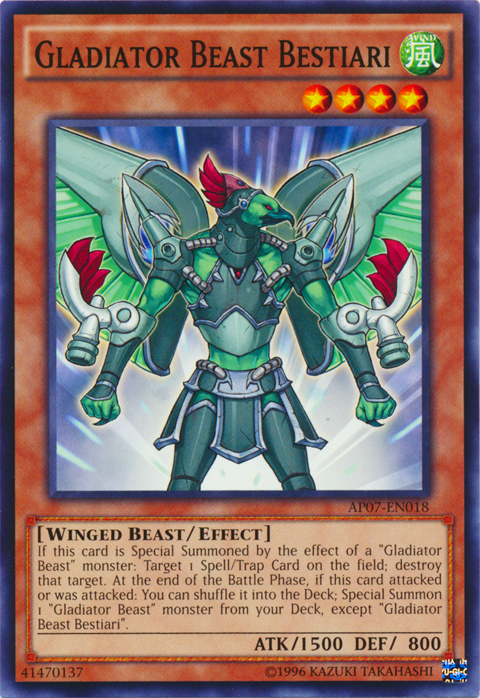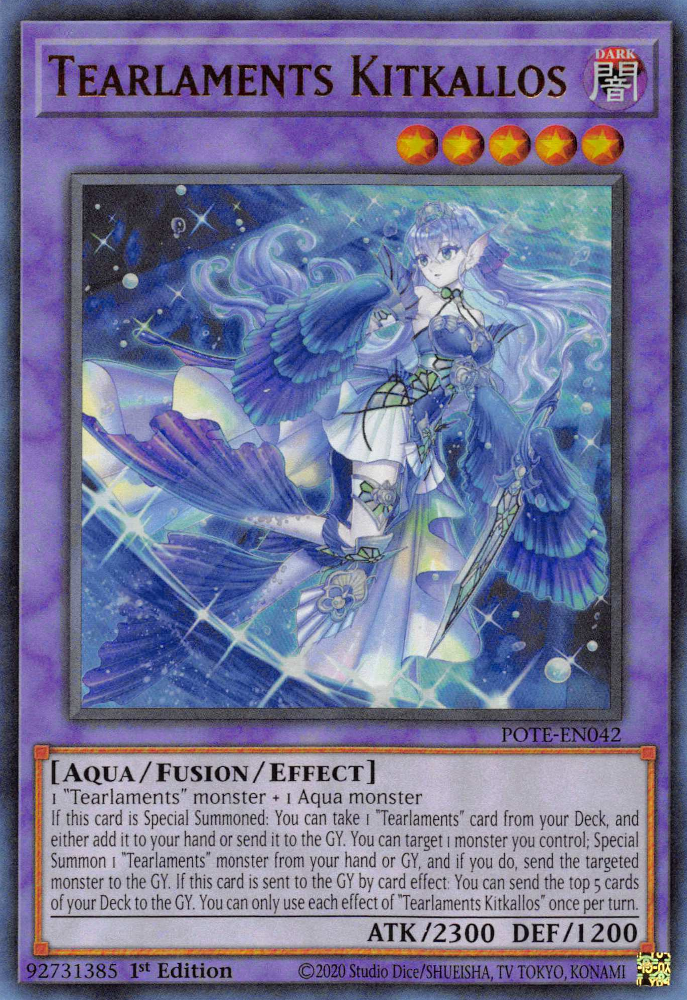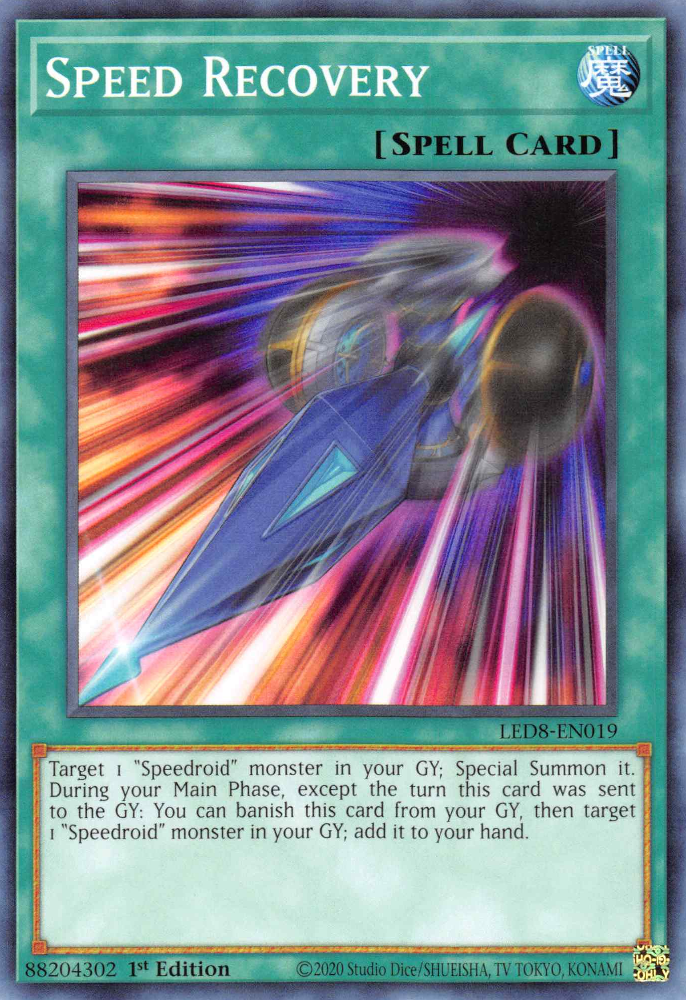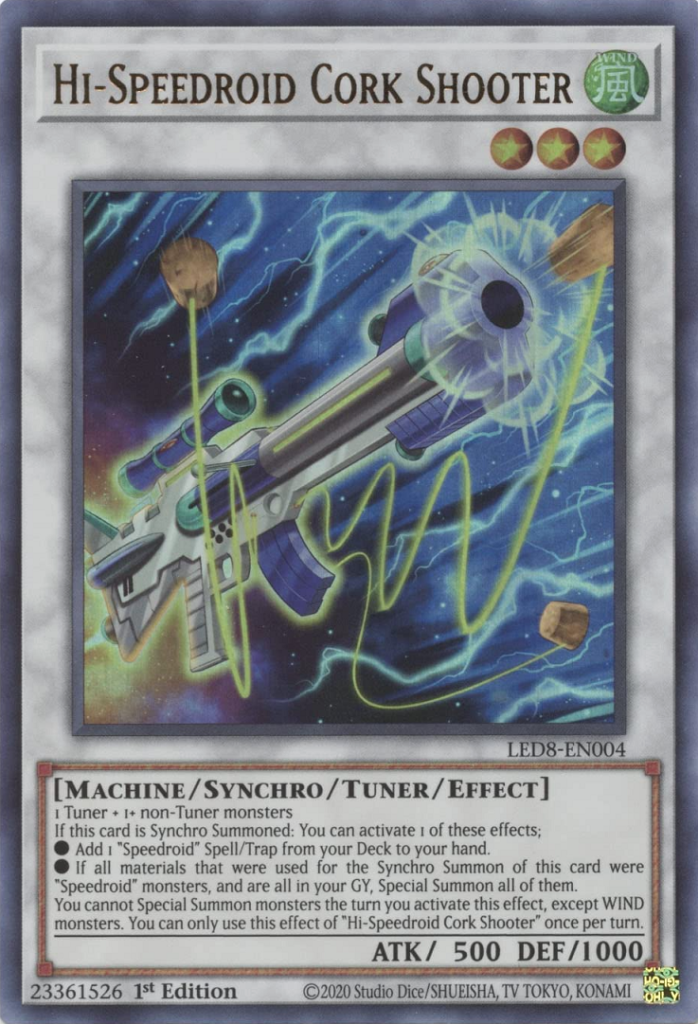Surprise, one of these that isn’t part of the ongoing dissertation in Rahi zoology for once.
The topic this time is “recycling”, i.e., returning cards that have been previously used up to advance the game state into a location where they can be used once more at a later point. This was on my mind with the last update specifically because Nuva Emergence does it, and so do the Bohrok and Bohrok-Kal that are the other focus of BPEV.
But before we go into these details, I actually want to start off with a more general tangent on the concept.
Recycling in Yugioh
Looking at the history of the actual game, there’s an argument to be made that recycling is one key thing that can contribute a lot to making a deck powerful, particularly in modern formats where you can make a lot from just the right few resources.
For example, Gladiator Beasts are often considered one of the first major decks with something resembling a modern playstyle, and sure enough a form of recycling is baked right into their core mechanics. Whether you tag out after battle or go into a Fusion, the monsters all return to the Deck, exactly where you want to have them for the next tag-out. This is what I would call “long-term recycling” – you don’t immediately get resources back, but it basically ensures you never run out of plays. Balancing-wise, it’s interesting to note that, because there is no direct advantage gain and because you technically lose potential resources on the field and such, this can be (and often is) even coupled with other benefits.
Later in history this long-term recycling also starts extending to the truly “spent” cards that are banished or in the GY, such as in the case of Thunder Dragon Fusion, a card that puts stuff back in deck with the side benefit of, once again, a Fusion Monster. On top of that, it also has a search effect in the GY itself, so over the course of two turns it alone lets a single monster perform a full circuit from GY/banished back to hand. Another common dynamic is recycling things into the Deck for draws, from Pot of Avarice to Runick Fountain. And in the Madolche archetype, we see returning to Deck not as something tied to an immediate benefit, but still as something all the monsters just do for free.
Of course, we can’t talk about long-term recycling without mentioning what is now widely known as perhaps the most powerful and versatile archetype ever printed, Tearlaments. Like Thunder Dragons, they can recycle fusion materials from the GY (though not banished) back into the Deck, and like Gladiator Beasts, they do this without the need for a Fusion Spell, instead using an effect on the same monsters you use as material. The result is a strategy that essentially makes its boss monsters at the “cost” of an infinite resource loop. It’s this entire concept we’ve been talking about taken to a logical extreme.
But that’s not even all Tear has to offer, because if you look at the Spells and Traps, you will find that many of their secondary effects when sent to the GY allow you to bring spent cards from all kinds of other locations back to your hand. Yes, this archetype also has short-term recycling, and there’s our segue.
By “short-term recycling”, I mean giving resources back into play directly, usually to the hand or field.
A personal favourite of mine that makes use of this a lot is Speedroid, including Speed Recovery, which actually does both revival and adding back to hand. Similar features are present on the three Synchro Monsters that help you climb into big bosses: Cork Shooter immediately brings its materials back to the field on Summon, Hagoita can revive itself if you control a Tuner, and Puzzle gives you a monster back in the End Phase to ensure followup. What we can see on all these effects is that, in contrast to the long-term recycling, the part where you get back a card is purely a payoff balanced by some kind of condition or cost. Which makes perfect sense when you consider the simple key difference that short-term recycling generates immediate advantage.
For our final example, let’s look at the Invoked engine, where Aleister searches Invocation, gets fused away and banished, and is added back to hand so you can also use him as a stat booster or to repeat the combo next turn. At the same time, Invocation itself gets put back into the Deck as long-term recycling, with the short-term recycling in and of itself being what you gain from doing so.
This is entirely in line with our overall hypothesis: Long-term recycling is a cost, short-term recycling is a benefit – and clearly the former can even pay for the latter.
Recycling in BYE Themes
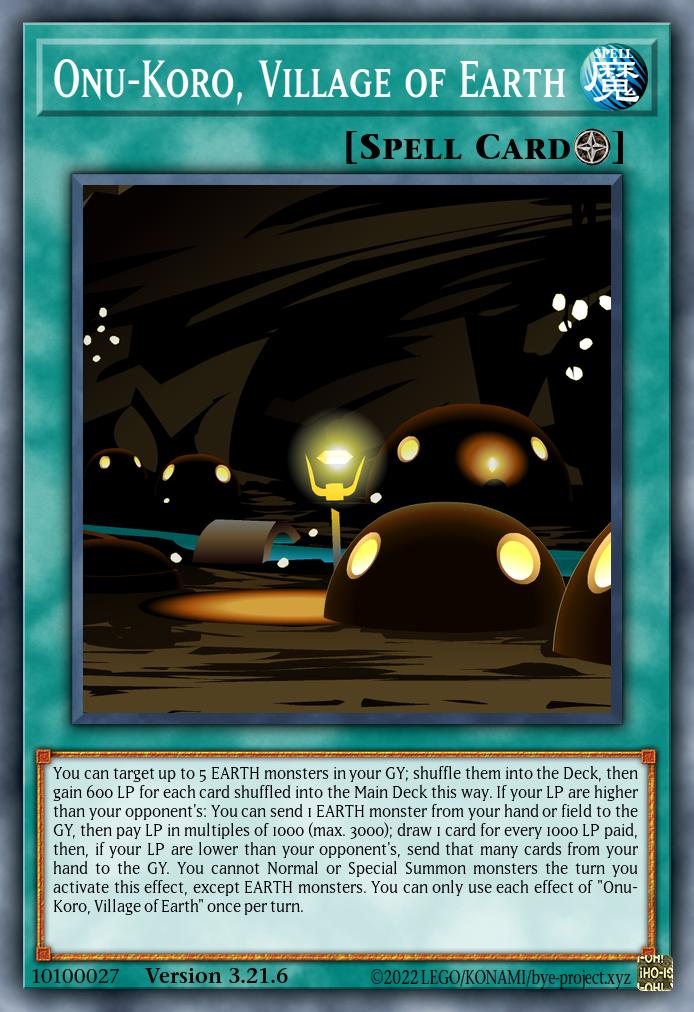
Onu-Koro, Village of Earth
Field SpellYou can target up to 5 EARTH monsters in your GY; shuffle them into the Deck, then gain 600 LP for each card shuffled into the Main Deck this way. If your LP are higher than your opponent’s: You can send 1 EARTH monster from your hand or field to the GY, then pay LP in multiples of 1000 (max. 3000); draw 1 card for every 1000 LP paid, then, if your LP are lower than your opponent’s, send that many cards from your hand to the GY. You cannot Normal or Special Summon monsters the turn you activate this effect, except EARTH monsters. You can only use each effect of “Onu-Koro, Village of Earth” once per turn.
Starting in BCOT, our foremost representative of long-term recycling is Onu-Koro. Nothing makes this more evident than the effects of its central Field Spell, letting you shuffle back EARTH monsters to gain LP that can subsequently be converted into multiple draws. The theme here is being rewarded for the “work” you did putting those monsters into the GY, and that’s probably also a core reason shuffling stuff back is generally treated as a cost- it requires setup.
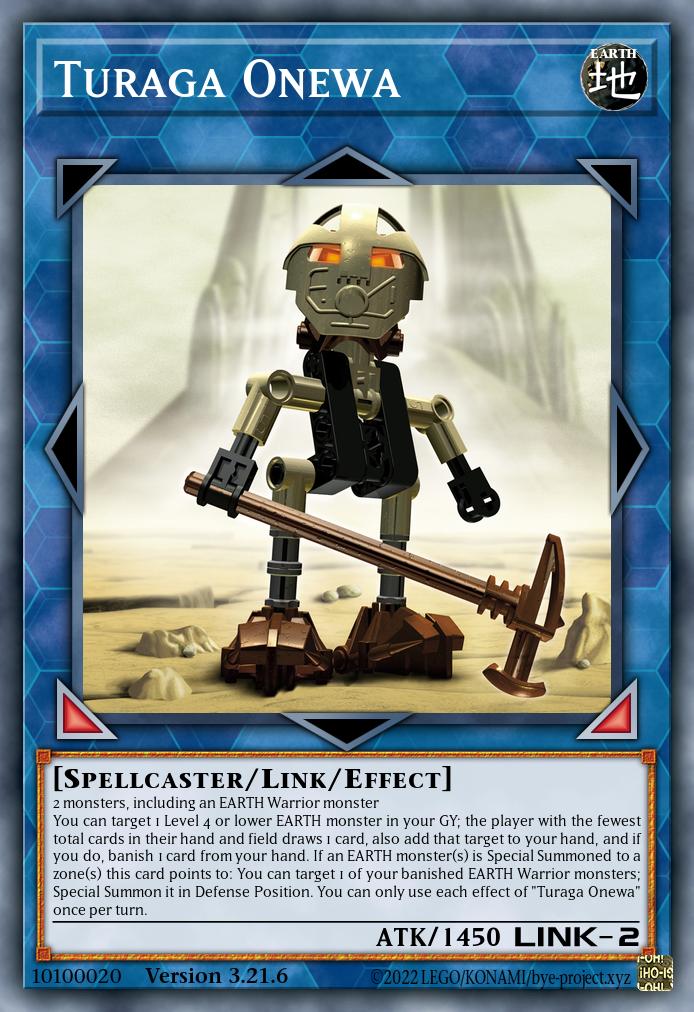
Turaga Onewa
Link Effect MonsterLink-2 [↙ ↘] | EARTH Spellcaster | ATK 14502 monsters, including an EARTH Warrior monster
You can target 1 Level 4 or lower EARTH monster in your GY; the player with the fewest total cards in their hand and field draws 1 card, also add that target to your hand, and if you do, banish 1 card from your hand. If an EARTH monster(s) is Special Summoned to a zone(s) this card points to: You can target 1 of your banished EARTH Warrior monsters; Special Summon it in Defense Position. You can only use each effect of “Turaga Onewa” once per turn.
The village for truly short-term recycling is Po-Koro, where you just try to build big boards through elaborate combos and therefore have a strong interest in getting your resources back as quickly as possible. However, the fact that you tend to use up those recycled cards immediately makes this strategy surprisingly weak at recovery, and thinking about that made me just realize a hidden third mode of recycling I haven’t been distinguishing so far.

Turaga Matau
Link Effect MonsterLink-2 [↙ ▶] | WIND Spellcaster | ATK 14002 monsters, including a WIND Warrior monster
During your Main Phase: You can Special Summon 1 Level 4 or lower WIND monster from your hand in Attack Position, but its ATK becomes 0. If this card is sent from the field to the GY: You can activate this effect; during the Standby Phase of your next turn, add 1 WIND monster from your GY to your hand, then, if your opponent controls more monsters than you do, you can make all monsters they currently control lose 700 ATK/DEF until the end of that turn. You can only use each effect of “Turaga Matau” once per turn.
Le-Koro has recovery as its explicit focus, and to achieve that, it does a lot of “mid-term recycling”, as you might call it. Matau is a perfect example with his ability to return a monster from your GY on the next turn, but there’s also Makani’s delayed recycling of WIND Warriors and Tamaru’s ability to come back out of the GY with any discard. These effects are clearly more like short-term than long-term recycling since they’re still treated as benefits, but the delay associated with them acts as part of the tradeoff in the equation.
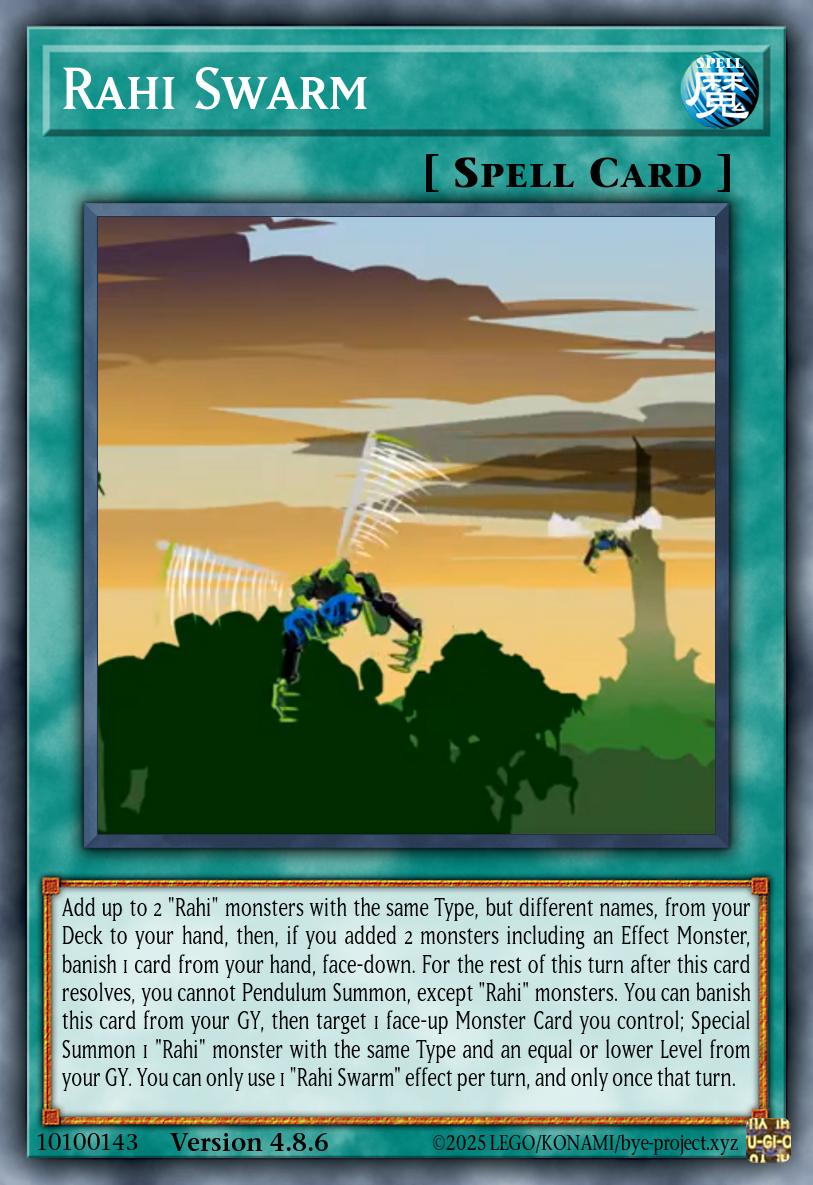
Rahi Swarm
SpellAdd up to 2 “Rahi” monsters with the same Type, but different names, from your Deck to your hand, then, if you added 2 monsters including an Effect Monster, banish 1 card from your hand, face-down. For the rest of this turn after this card resolves, you cannot Pendulum Summon, except “Rahi” monsters. You can banish this card from your GY, then target 1 face-up Monster Card you control; Special Summon 1 “Rahi” monster with the same Type and an equal or lower Level from your GY. You can only use 1 “Rahi Swarm” effect per turn, and only once that turn.
There’s no dedicated recycling theme in BCOR (… yet!), but there certainly lies some potential in the fact that most Rahi Spells and Traps have additional effects in the GY restricted by a shared HOPT with the regular effect. That means after (hypothetically) building a big Rahi board, if it gets broken and the turn passes back to you, you could (hypothetically) use that accumulated stock of effects as followup to rebuild and remove whatever your opponent put up. Might be an idea worth exploring in an upcoming overhaul.
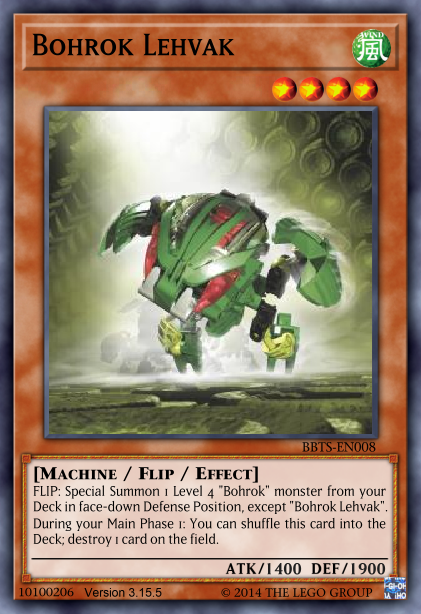
Bohrok Lehvak
Flip Effect MonsterLevel 4 | WIND Machine | ATK 1400 / DEF 1900FLIP: Special Summon 1 Level 4 “Bohrok” monster from your Deck in face-down Defense Position, except “Bohrok Lehvak”.
During your Main Phase 1: You can shuffle this card into the Deck; destroy 1 card on the field.
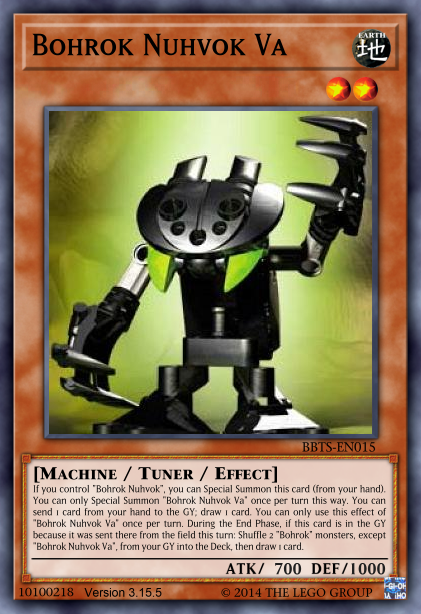
Bohrok Nuhvok Va
Tuner Effect MonsterLevel 2 | EARTH Machine | ATK 700 / DEF 1000If you control “Bohrok Nuhvok”, you can Special Summon this card (from your hand). You can only Special Summon “Bohrok Nuhvok Va” once per turn this way. You can send 1 card from your hand to the GY; draw 1 card. You can only use this effect of “Bohrok Nuhvok Va” once per turn. During the End Phase, if this card is in the GY because it was sent there from the field this turn: Shuffle 2 “Bohrok” monsters, except “Bohrok Nuhvok Va”, from your GY into the Deck, then draw 1 card.
And that brings us straight to BBTS and the Bohrok, an archetype equipped with massive long-term recycling capabilities because it needs to keep up the illusion of an endless swarm despite being limited to 3 of each monster. The Level 4 Bohrok put themselves from the field back as cost for their destructive effects, while (some of) the Level 2 Bohrok Va put monsters from the GY back as cost for a draw. All just as observed above, which is funny considering I had none of this theory really figured out back when I made these cards.

Bohrok Tahnok-Kal
Xyz Effect MonsterRank 4 | FIRE Machine | ATK 2100 / DEF 22002 Level 4 “Bohrok” monsters
Place materials detached from this card on the bottom of the Deck instead of sending them to the GY. Once per turn: You can attach 1 “Krana” monster from your hand, field, or GY to this card as material. (Quick Effect): You can detach 1 material from this card, then target 1 face-up monster your opponent controls; it cannot attack or activate its effects this turn, also you can detach 1 material from this card, and if you do, destroy all monsters your opponent controls with less than 2000 ATK. You can only use this effect of “Bohrok Tahnok-Kal” once per turn.
Anyway, the Bohrok-Kal act as a logical extension of the concept with their shared clause of putting detached materials back into the Deck. However, this one is actually pulling triple duty because not only does it enable your resource loop, it also limits the ability to attach Krana from the GY by not putting them back there and can keep your opponent off GY resources if you snatch up some of their cards with Bohrok Counterattack .

Nuva Emergence
TrapFusion Summon 1 “Toa Nuva” Fusion Monster from your Extra Deck, by shuffling its materials from your hand, GY, and/or banishment into the Deck. If your opponent controls a monster, you can also banish up to 1 monster from your Deck as material. During the Main Phase, except the turn this card was sent to the GY: You can banish this card from your GY; add 1 “Nuva” Spell/Trap from your Deck or GY to your hand, except “Nuva Emergence”, then discard 1 card. You can only use each effect of “Nuva Emergence” once per turn.
Meanwhile on the Toa’s side, the aforementioned Nuva Emergence is the main point of recycling, being a classic Fusion Summon by shuffling back materials. However, this is less good in this particular strategy than it has historically been because the materials you can recycle are limited to Toa Mata and Energized Protodermis, meaning it can’t get spent Toa Nuva themselves back into rotation. That’s why it also has a way to use a material from the Deck, so you have a better chance to assemble what you need for the Nuva that are still available.
The secondary effect, meanwhile, is our mid-term recycling that can also act as a search, which is the same effect all the Nuva have on Summon. The key advantage it boasts on this card is the fact that you can do it without having to pull off a Fusion Summon, which is obviously greatly appreciated whenever you aren’t in a particularly good spot – the exact times you can really use some recycling.
Conclusion
Where was I going with all this? Good question. Just consider it my recent thoughts on the topic in somewhat organized form. Key points as takeaways:
- Long-term recycling is beneficial, yet also treated as a cost due to the setup it needs.
- Short-term recycling is a payoff that is balanced by some form of cost, which can even be long-term recycling.
- Mid-term recycling is like short-term recycling, but delayed and cheaper.
- Archetypes that are good at recycling have a strong track record of being both successful and seen as fun to play.
- I should design more archetypes than I already have with recycling in mind.
And that’s all. Now time to get back on that Rahi classification grind!

